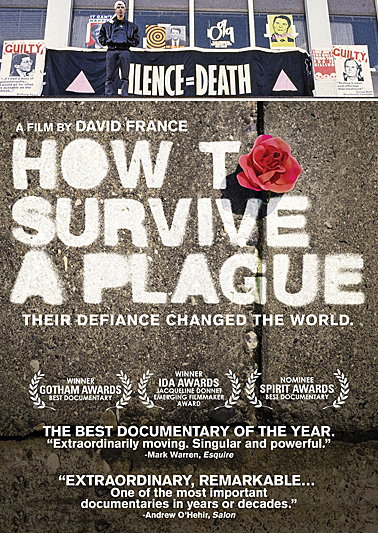When the AIDS epidemic first hit more than 30 years ago, it brought with it an outbreak of panic and fear.
 Dr. Joan M. Duggan remembers it well.
Dr. Joan M. Duggan remembers it well.
“In the 1980s and early 1990s, people were dying of AIDS and it was a dreaded and feared disease for very good reasons — it was a terrible way to die, a true plague,” said the UT professor of medicine and director of the Ryan White Program at UT Medical Center. “We were caring for people living with AIDS when it was hopeless.”
She recently saw “How to Survive a Plague,” a documentary that tells how the AIDS Coalition to Unleash Power (ACT UP) and the Treatment Action Group (TAG) pushed for medical treatment.
“By refusing to take no for an answer — by refusing to agree to the very meager proportion of medical machinery that society allotted to them — these activists made dramatic changes,” Duggan said.
“It may seem hard to believe that we would run drug studies and design clinic medical trials without any input from the patients who would be subjected to them, but until the era of HIV drug trials, that was business as usual.”
The 2012 film was nominated for an Academy Award for Best Documentary Feature and appeared on top 10 lists for several publications, including The New York Times, The Boston Globe, Entertainment Weekly, The Atlantic and the San Francisco Chronicle.
Filmmaker David France uses archival footage from the 1980s and 1990s to show how ACT UP and TAG members changed a diagnosis of AIDS from a death sentence to a manageable condition by infiltrating the pharmaceutical industry, helping to identify promising new drugs, and expediting trials to get medications to patients.
“‘How to Survive a Plague’ bears witness,” France wrote in a letter posted on surviveaplague.com. “The film documents what I saw with my own eyes in those first long dark days of the worst plague in America — it shows both the tragedy and the brilliance leading up to 1996 when effective medication finally made it possible to think of HIV/AIDS as a chronic condition, like diabetes.”
In 1995, AIDS was the No. 1 cause of death among people ages 25 to 44 in the United States, according to the Centers for Disease Control and Prevention. By 2012, it ranked No. 6.
France wrote, “I witnessed all this in my role as a journalist, not an activist. Instead of a bullhorn or placard, I carried a notepad and pen. There I am in the background of these frames.”
Sue Carter, clinical counselor with the Ryan White Program at UT Medical Center, said the film wasn’t shown in Toledo last year. “When the Ryan White Center learned about ‘How to Survive a Plague,’ we purchased it so we could show it,” Carter said.
The former Medical College of Ohio took a leading role in HIV education in the early days of the disease. In 1985, the hospital offered the first free and anonymous HIV testing in the region. The federally funded Ryan White Program was established at MCO in 2000.
“UT Medical Center has been treating people with HIV since the mid-1980s, and there are many caregivers, activists and patients still in Toledo who were around in the early days of the pandemic,” Carter said.
“We remember ACT UP and the protests that led to funding and medications that benefit patients today. We want everyone to see the movie,” Carter said.
There will be a free screening of “How to Survive a Plague” Sunday, March 24, at 2 p.m. at the Collingwood Arts Center, 2413 Collingwood Blvd., Toledo.
Co-sponsors of the event are the UT Ryan White Program, UT Spectrum, the Toledo-Lucas County Health Department HIV Program, the AIDS Resource Center, Equality Toledo, Nuestra Gente Community Projects and Holiday With Heart Charity Gala.